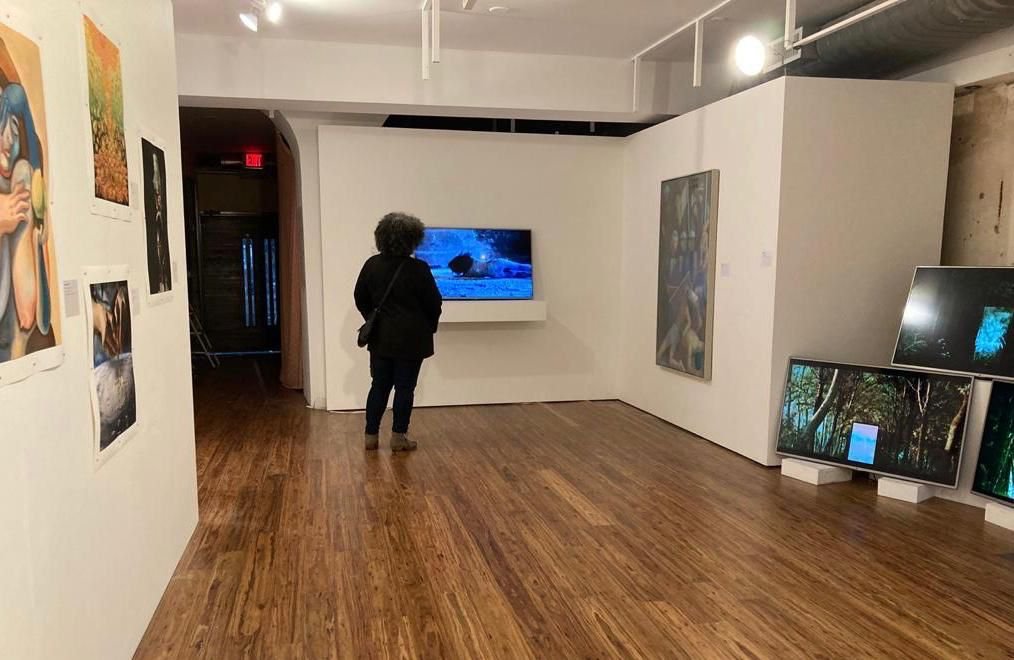María Paula Suárez & Stella Psarouli in Conversation with CEO of See|Me, Brendan Burns
See|Me is a socially conscious startup founded with the intent of serving an international community of artists and bringing visibility to their work via open calls, exhibitions, events, partnerships, and select economic opportunities. Over the past two years alone, they have worked with over 7,000 artists from 35 countries around the world including a significant portion from the LatinX community in North and South America and the Caribbean.
The digital gallery offers open-call exhibitions at Art Fairs, and galleries in New York City, Miami, and beyond to showcase talented artists to thousands of gallerists, collectors, and purchasers each month.
Eager to learn more about See|Me and its values, we recently sat down with the company’s CEO Brendan Burns as he shared some of his insights into the art world and its transformation over the past few years.
Gallery Directors Brendan Burns and Nerissa Bardfeld at SCOPE Fair 2021.
María Paula Suárez & Stella Psarouli: From a gallerist’s perspective, how does the recent shift in power, away from the traditional way of consuming art, benefit the dealers? Is it still a win-win?
Brendan Burns: At this juncture, the shift in power clearly accrues to (a) a collective of artists who join forces to create and promote an NFT project and/or (b) the artist who primarily benefits on a resale. Still, the major question mark with respect to long-term NFT success is around how to market them. What seems clear so far is that successful NFT projects are collective and themed ideas - Bored Ape Yacht Club for example. There are a few exceptions like Damien Hirst’s The Currency but he was famous already. It is unclear how dealers or galleries will benefit in our opinion. That said, a huge amount of future growth needs to arise from new consumers adopting the medium for the art or for utility. The utility component is not talked about enough, yet, in our view. Consider, however, that when a person buys an NFT, it automatically includes “proof of (at least digital) ownership” or something approximating a COA, and it includes immediate access to a secondary market. Those are clear innovations versus the historical approach. Dealers could play a role here in defining these things moving forward.
MPS, SP: Is the growth sustainable?
BB: If you mean, is the current price/growth trend sustainable, we think that is questionable as it relates to single assets, but as a broad asset category, absolutely! There are so many benefits and access will only get easier. We are, almost certainly, in the very early stages of this market.
Exhibition assembly, NATURE NURTURE at The Invisible Dog Art Center, 2021.
MPS, SP: Besides the hype, in terms of democratizing the way of consuming art, what makes this market unique?
BB: We think it adds to the democratization of both the consumption and the production of art. Lots of non-traditional artists have been making NFTs and making a lot of money. Lots of these people never made money from their art before. Also, lots of people who never purchased art before have bought NFTs and are now “collectors.” This is very positive as it brings a new group of collectors to the art world. Many of these new buyers are not part of the traditional definition of collectors. That could represent long-term growth, so we think it’s great.
MPS, SP: Do you think the financialisation of art is having a good impact on the current market? Why?
BB: Yes, it brings positive attention and in many cases, spreads the wealth to more artists. It also motivates more people to make and buy art because they all have different incentives. Some people buy art for aesthetic reasons, some for prestige, some for investment, and some for a combination of the preceding.
Ki Smith Gallery, ART TAKES 2021.
MPS, SP: In your words, tell us about See|Me.
BB: See|Me is a global platform built to help artists gain recognition, constructive feedback and connect with economic opportunities. We facilitate discovery between ambitious, talented artists and collectors and are building a predictive algorithm to identify artists whose work should appreciate in value over time. Over the past two years, we have worked with over 7,000 artists from 35 countries.
MPS, SP: How do you curate the gallery while providing a different, more accessible approach?
BB: We use a rigorous and highly objective approach to identify the artists we showcase. We like to say “let the market curate.” That said, we have identified a strong correlation between experience, productivity, and great art.
See|Me team, Nerissa Bardfeld, María Suárez, Sawyer Zehr, Angelica Pulido, and Brendan Burns, at SCOPE Fair 2021.
MPS, SP: Where is the line drawn?
BB: We don’t have a rigid “line.” We are looking for and value authenticity, technical excellence, and emotional connection.
MPS, SP: Any advice for creators still waiting to be discovered around the globe?
BB: Try, put yourself out there, and do it over and over again. Look for feedback, no matter how painful. Bare your soul and eventually, your audience will find you.
See|Me booth at SCOPE Fair 2021.
To summarise, we dug deeper into See|Me’s core value and understood and appreciate how the gallery exists to provide a solution for a major problem in the art world - to help artists succeed while encouraging enthusiasts and collectors to identify and support high quality and undiscovered talent in a sustainable structure.
Thanks to Brendan Burns on behalf of MADE IN BED.
María Paula Suárez and Stella Psarouli
Contributing Writers, MADE IN BED






